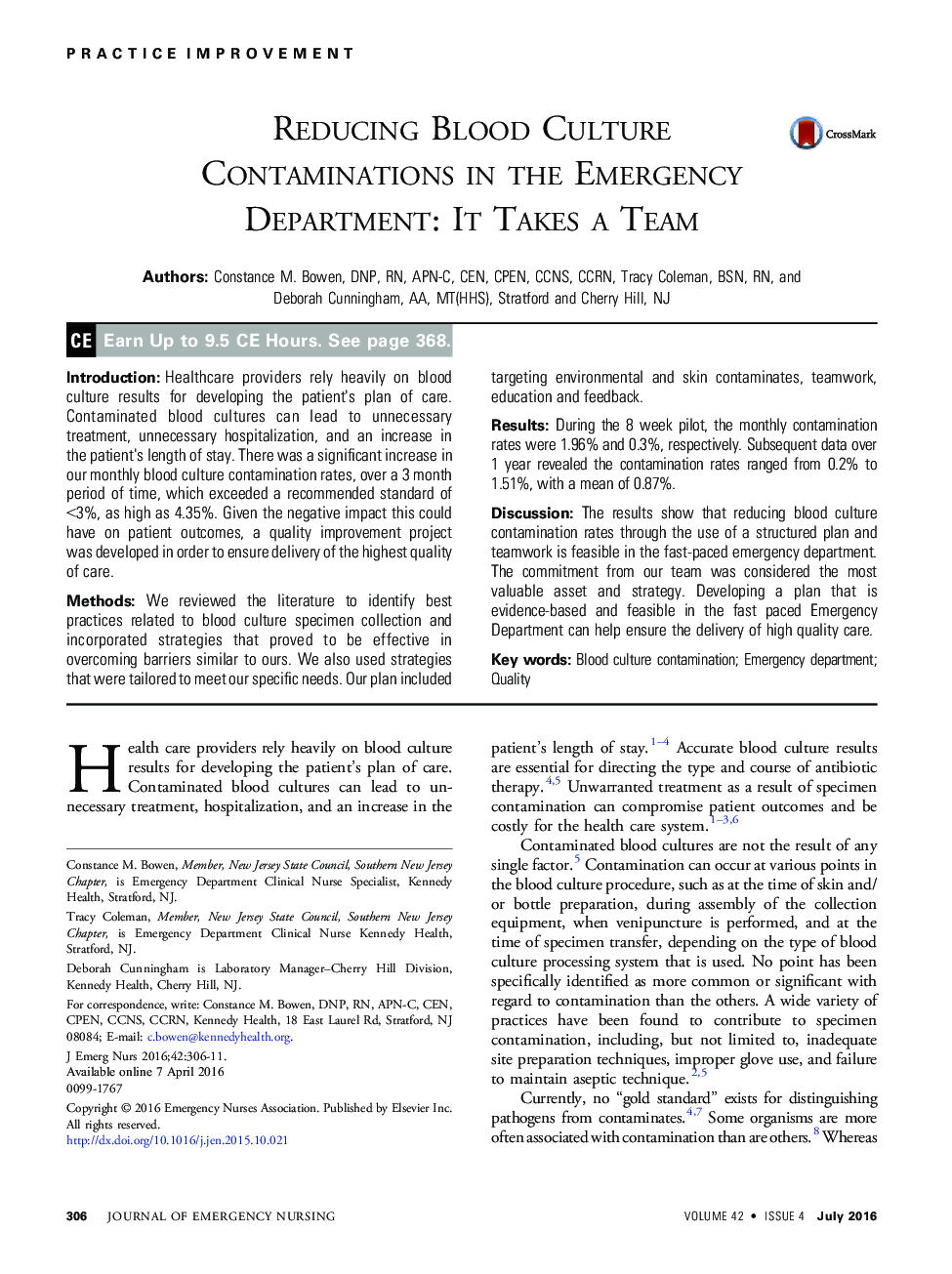| کد مقاله | کد نشریه | سال انتشار | مقاله انگلیسی | نسخه تمام متن |
|---|---|---|---|---|
| 2609678 | 1134563 | 2016 | 6 صفحه PDF | دانلود رایگان |
IntroductionHealthcare providers rely heavily on blood culture results for developing the patient's plan of care. Contaminated blood cultures can lead to unnecessary treatment, unnecessary hospitalization, and an increase in the patient's length of stay. There was a significant increase in our monthly blood culture contamination rates, over a 3 month period of time, which exceeded a recommended standard of <3%, as high as 4.35%. Given the negative impact this could have on patient outcomes, a quality improvement project was developed in order to ensure delivery of the highest quality of care.MethodsWe reviewed the literature to identify best practices related to blood culture specimen collection and incorporated strategies that proved to be effective in overcoming barriers similar to ours. We also used strategies that were tailored to meet our specific needs. Our plan included targeting environmental and skin contaminates, teamwork, education and feedback.ResultsDuring the 8 week pilot, the monthly contamination rates were 1.96% and 0.3%, respectively. Subsequent data over 1 year revealed the contamination rates ranged from 0.2% to 1.51%, with a mean of 0.87%.DiscussionThe results show that reducing blood culture contamination rates through the use of a structured plan and teamwork is feasible in the fast-paced emergency department. The commitment from our team was considered the most valuable asset and strategy. Developing a plan that is evidence-based and feasible in the fast paced Emergency Department can help ensure the delivery of high quality care.
Journal: Journal of Emergency Nursing - Volume 42, Issue 4, July 2016, Pages 306–311
